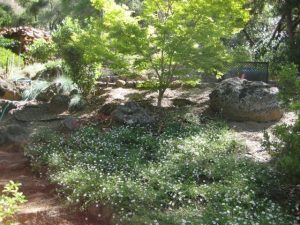Underground greenhouses are ecologically smart, viable and inexpensive to build. In some of the literature, they were popularized in the 1960s and 1970s as “hippy greenhouses.” Sometimes referred to as earth-sheltered greenhouses, they create natural insulation using the warmth of the earth. Usually built at a depth of six to eight feet into the ground, they can be constructed in virtually any size. A small family greenhouse might measure a few feet by a few feet while a commercial growers’ greenhouse could measure hundreds of feet.
Using the natural stored warmth of the earth makes them cost-effective while the constant temperature greatly extends the growing season by weeks or months. The ideal would be a 12-month growing season. With some planning and front-end construction, this is possible and is being done today in many cold northern areas. Temperature is no longer a limit to your growing season. Imagine not being dependent on your area’s first and last frost dates dictating what and when you plant your crops.
Building an earth-sheltered greenhouse can be accomplished using various materials and methods; most in-ground greenhouses are basic, functional structures. The structure’s longest sides should be constructed in an east-west direction in order to align with the sun’s path overhead. The roof can be made of glass or plastic, depending on its size. Sometimes polycarbonate is used for the roof because of its strength, toughness and resistance to impact. You can use whatever materials your budget allows as long as the sun’s rays can reach your crops. In some locations on a slope, the greenhouse can be built into the side of the hill, using the excavated earth to build up the opposite side of the greenhouse. It is also possible to incorporate a built-in root cellar adjacent to your greenhouse to store your year-round bounty while you are in the process of digging the greenhouse pit.
There are numerous books on constructing and framing an underground greenhouse. One of the basic ones I referred to was “The Earth-Sheltered Solar Greenhouse Book” by Mike Oehler. His book describes the trials and tribulations of building what he describes as an “energy free year-round greenhouse.”
Seasonal vegetable plants need protection from extreme temperature variations and many don’t survive freezing weather. Your USDA plant hardiness zone growing season may not be nearly as long as you would like. Above ground growing in uncertain temperatures at the beginning or end of growing season is labor intensive. Many of us become slaves to our gardens trying to save new little seedlings from frost by putting up row covers in the spring or picking those last tomatoes to ripen in the house at the first warning of an autumn freeze.
We can capture the sun’s energy stored in the earth. Ground temperature six to eight feet below the surface is reliably between 50- and 60-degrees year-round. With weather changes we have all experienced recently, a constant growing temperature may be just the thing for our future gardening endeavors. It’s certainly something to think about, investigate further and consider for our next gardening adventure. I, for one, would love fresh, local tomatoes year-round (I’m already dreading picking my end-of-the-season last one). Happy digging in lovely soil and here’s to new old ideas.
Diane Miller is a University of California Cooperative Extension Master Gardener of Tuolumne County.

